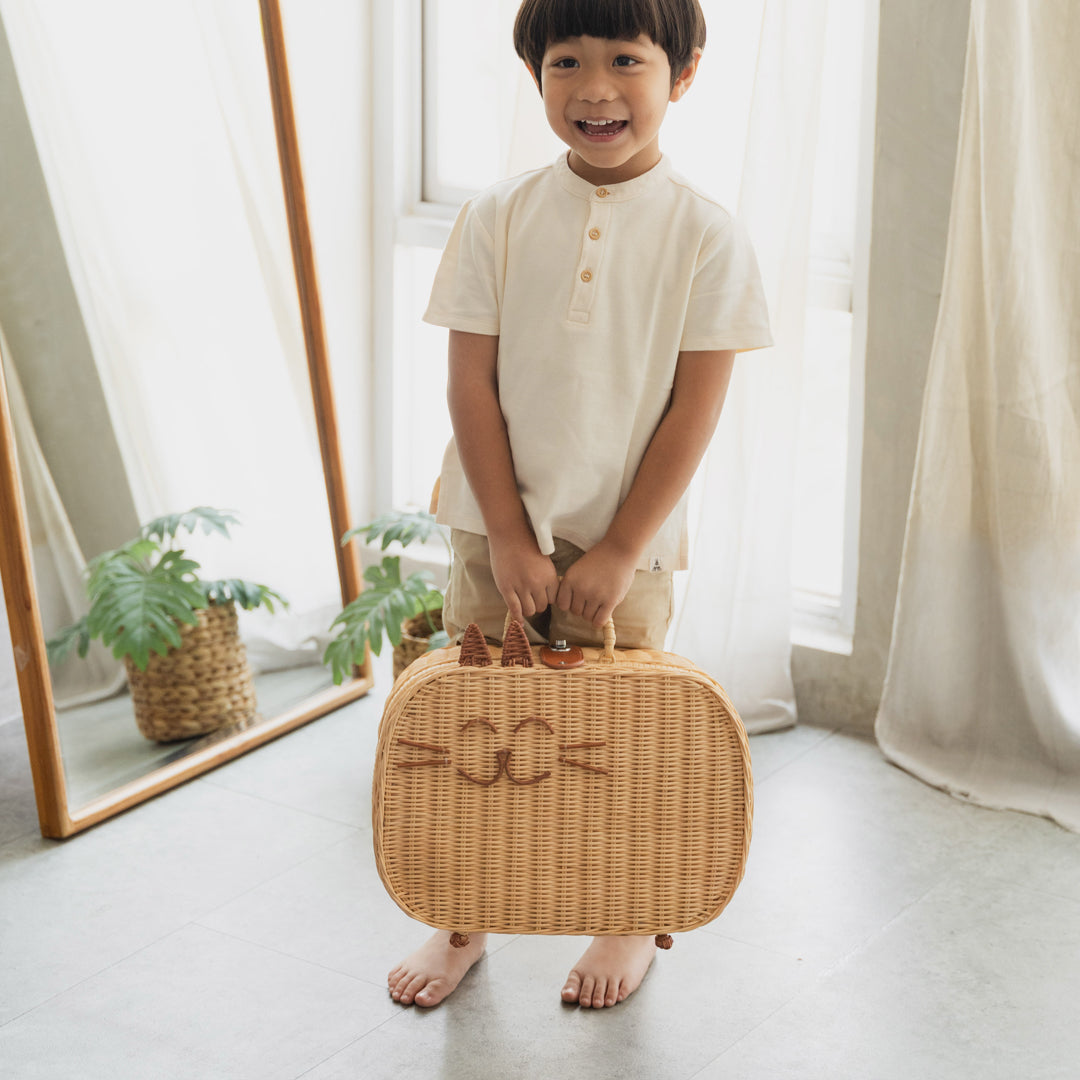
Are Rattan Stools Comfortable? (Here’s Why They’re Smarter Than You Think)
Let’s be honest: most people assume that rattan stools are simply a design choice. Aesthetic, yes. Rustic, definitely. Lightweight and maybe eco-friendly. But comfortable? That’s a stretch, right?
Not quite.
What if we told you that rattan stools aren’t just more comfortable than they look, but that their comfort is by design, an underrated result of structure, material logic, and the way our bodies naturally respond to certain environments?
Let’s dig into why these handcrafted beauties are smarter than most of us give them credit for.
1. They’re More Comfortable Than They Look

Rattan stools, particularly those crafted with a woven seat and slightly concave dip, have something that modern chairs often over-engineer: passive ergonomics.
This means the shape and material of the stool naturally respond to your weight distribution. Unlike hard plastic chairs or rigid bar stools, rattan flexes just enough to follow the contours of your body. You won’t sink, but you also won’t feel like you're perching on a block.
The breathability of the woven design also plays a subtle but crucial role. (We’ll get to that.)
2. You Don’t Get Sticky or Sweaty Sitting on One
Here’s an often-ignored truth about sitting: heat and sweat build-up can create subtle discomfort over time, especially in warm, humid climates.
Unlike upholstered or metal stools that trap heat, rattan is naturally breathable. Air passes through the woven structure, keeping your seat cool. It’s a comfort factor that doesn't get nearly enough credit, but it’s one of the reasons people keep returning to these stools, especially in tropical or unventilated spaces.
Think of it like linen clothing for your living space. Once you experience it, you wonder why everything else felt so stifling.
3. They’re Light, But They Don’t Feel Flimsy

Rattan stools are lightweight, and that matters. They’re easy to move, reposition, or tuck away. But unlike plastic or acrylic alternatives, they don’t feel flimsy. There’s a visual and physical sturdiness to rattan that gives the sitter a sense of groundedness.
That sensation of stability, especially when balanced with mobility, is often what people mean when they describe a chair as "comfortable." It’s not just about padding. It’s about how your brain interprets safety and support.
This is particularly important in neurodivergent households where sensory sensitivity plays a role in furniture selection. Soft sound absorption, gentle textures, and the lack of visual noise make rattan stools ideal for sensory-friendly spaces.
4. It Feels Good to Sit on Something That’s Good for the Planet
Here’s something fascinating: our brains respond differently to materials that feel natural. The psychology of sustainability plays a role in how we feel in a space.
Knowing that your stool is made from renewable rattan, handwoven without synthetic glues or industrial dyes, can subtly increase emotional satisfaction. We call this the moral comfort effect—where doing good feels good, and that sense of harmony adds to overall comfort.
It’s a little like drinking from a handmade ceramic mug instead of a plastic cup. The same action feels different when the object aligns with your values.
5. It Just Works, However You Use It
Let’s not forget functional comfort, how easy a stool is to integrate into daily life.
Can you move it with one hand? Use it as a plant stand? A side table? A stepping stool for your toddler? Rattan stools answer yes to all of these.
This is where smart design beats one-dimensional design. You’re not just buying a stool, you’re buying spatial agility. And that reduces the friction of daily living, which in turn contributes to a more comfortable home.
6. It Looks Effortless, But It’s All in the Details

Comfort isn’t just physical. Sometimes, it’s visual and emotional.
A well-designed rattan stool does something subtle but profound, it reassures you. The craftsmanship, the natural textures, the neutral tones—they signal calm, warmth, and softness.
And unlike hyper-minimalist furniture that can feel cold or industrial, rattan invites you in. It says, “you can live here.”
That matters.
Because in the end, comfort isn’t just about what you sit on, but how you feel within a space.
Rattan vs the Usual Suspects
Let’s stack it up. Here’s how rattan compares:
| Feature | Rattan Stool | Plastic Stool | Metal Stool | Upholstered Stool |
|---|---|---|---|---|
| Breathability | ✅ Woven, air-circulating | ❌ Traps heat | ❌ Conducts heat | ❌ Foam traps heat |
| Weight | ✅ Lightweight but sturdy | ✅ Lightweight | ❌ Often heavy or awkward | ❌ Medium to heavy |
| Multi-use Functionality | ✅ High | ✅ Medium | ❌ Low (often single-use) | ❌ Low |
| Sustainability | ✅ Natural, biodegradable | ❌ Petroleum-based | ❌ High-carbon footprint | ❌ Mixed materials |
| Sensory Friendliness | ✅ Gentle texture, low noise | ❌ Hard, can be noisy | ❌ Cold, reflective surfaces | ✅/❌ Depends on material |
| Visual Warmth | ✅ High | ❌ Low | ❌ Low | ✅ Depends on styling |
So, Are Rattan Stools Comfortable?
Absolutely—but not in the way you might have first thought.
They’re comfortable because they honour the natural form of the body. They’re breathable, stable, visually warm, and emotionally grounding. They’re lightweight but not flimsy. Stylish but not cold. Sustainable and reassuring.
In short, they’re the kind of seat that gets better the longer you live with it.
So if you’ve been underestimating rattan stools as mere props in a Pinterest mood board, maybe it’s time to give them another look.
You just might find that comfort was woven into the story all along.
Explore handcrafted rattan stools that are as smart as they are beautiful, right here at MOMIJI.


